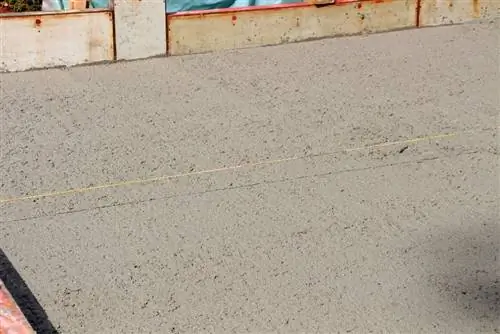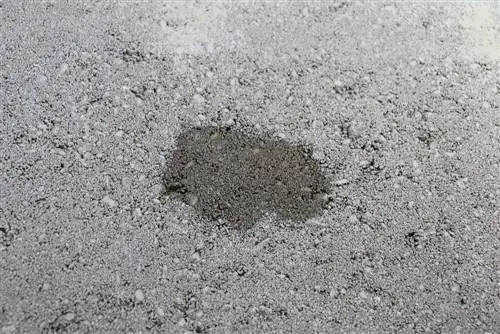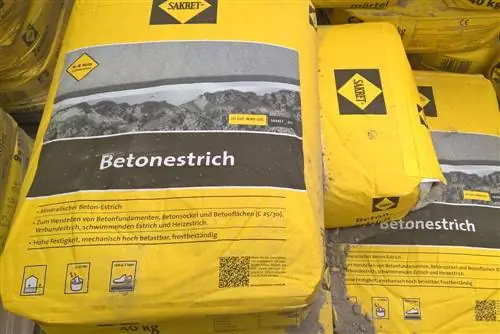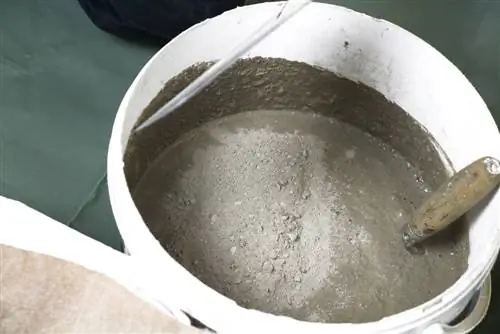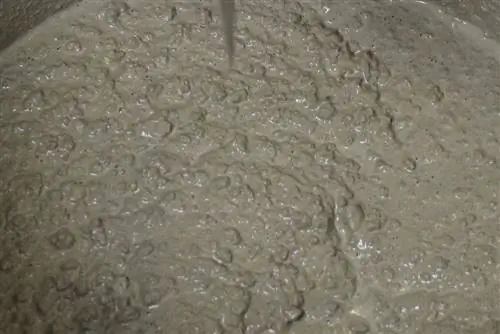- Author admin [email protected].
- Public 2023-12-17 03:39.
- Last modified 2025-01-24 12:45.
Mineral concrete is a special form of conventional concrete because it does not contain cement as a binder. It is a mixture of rock grains of different sizes. The proportion of broken grain is usually very high. All that is needed to mix the processable raw material is water. It is important that the mineral concrete is properly compacted after distribution. In this way, load-bearing layers or substructures can be created for paths, roads and other areas. So far, mineral concrete has been used less frequently in the private sector.
Properties of mineral concrete
After mixing, the mineral concrete is a highly compacted building material made from various types of gravel, chippings or crushed gravel. It is a material with high strength that is primarily used for large-scale construction work in gardening or landscaping. One of the advantages of mineral concrete is its high frost resistance and high stability, provided the building material has been processed correctly. Flat surfaces can be produced without any problems and can be loaded immediately after processing and completion. If damage occurs to the surfaces, it can be easily repaired. Depending on the grain size, the building material is permeable to water or not.
Grain
The costs for mineral concrete depend, among other things, on the respective grain size. It is indicated by a number made up of the sizes of the smallest and largest grains. A grain size of 2/45 means that the smallest grain size is 2 millimeters, while the size of the largest grains is 45 millimeters. This value essentially determines the properties of the mineral concrete after mixing. There are also types of concrete with so-called zero proportions of small grain sizes such as 0/45. After processing and compacting, these materials become completely waterproof.
The zero grain size and what it means
With a grain size with proportions of smaller grains, after processing and compacting, tiny spaces remain between the grains through which the water can drain away. However, waterproof supporting layers made of mineral concrete should only be used if the subsequently applied top layer is also waterproof.
The size of the individual grains
The size of the largest grains and their proportion in the concrete are also very important. If the grain sizes are too large, producing the concrete ceiling and, above all, compacting it becomes increasingly difficult. Very powerful vibratory plates are required for processing such materials.
Composition
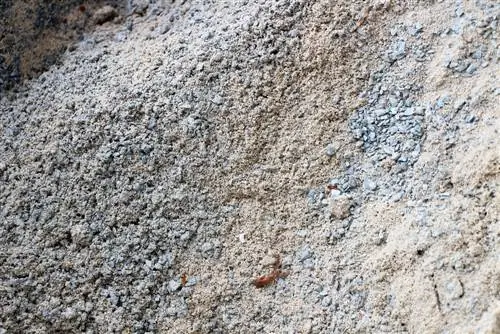
At first glance you can only see the smallest and largest grain size. However, the exact composition of the building material is at least as important as the grain size. There are numerous sizes for the smallest and largest grains. In addition, their proportions can vary greatly between different types of concrete. There are so-called sieving curve diagrams in which the proportions are shown in percentages. With the help of these diagrams it is possible to recognize the exact structures of the respective mixtures. What is important in this context is the so-called ideal sieve curve, which is often also referred to as the Fuller parabola. It characterizes the ideal distribution of the different grain sizes and their sizes in a specific concrete mix. If this ideal sieving curve is achieved, the cavities between the individual grains are approximately the same size. The grain distribution is ideal in this case.
Processing mineral concrete
It is a popular building material, but it must be processed professionally. In order to proceed as professionally as possible, the correct grain size should first be selected. Delivery takes place directly from the concrete plant or gravel plant, and is usually fully mixed so that work can begin immediately. If the material is mixed yourself, the mixing ratio should be observed as closely as possible. It is also very important to mix the building material very well before processing and then process it as quickly as possible. The processing itself takes place in just a few steps:
- mix the concrete (adhere to the mixing ratio exactly)
- then distribute the concrete mixture evenly
- compacting with the vibrating plate
- If necessary, repeat the process with additional layers of concrete
- Apply top coat
What should be considered when editing
When distributing, it is important that the relevant area is brought to the correct height, taking the additional top layer into account. The level of the planned load on the corresponding area is also very important when determining the thickness of the concrete layer. The higher the load, the stronger the base layer must be. If it is an area that is not accessible to traffic, the thickness can be between 20 and 30 centimeters, for example. If the area is driven on, the thickness of the concrete layer should be at least 40 centimeters; if heavy equipment is driven on, it can be a little more.
Working with multiple layers of concrete
If the concrete layer is applied with a thickness of over 40 centimeters, this should be done in layers. For example, 20 centimeters can be applied as the first layer. Additional material is then applied and compacted. By processing, compacting and producing the concrete layer in layers, its stability increases significantly.
Compaction with the vibrating plate
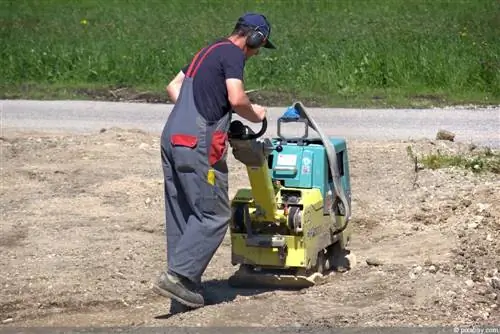
The compaction itself is done with a vibrating plate. If the concrete has a coarser grain size, the vibrating plate must be sufficiently powerful so that compaction can take place sufficiently. The size of the largest grain is crucial. Special protective measures should be taken when compacting using the vibrating plate. It is a loud and powerful tool. Safety gloves, safety shoes and hearing protection are therefore mandatory.
Use in the private sector
Mineral concrete is usually used primarily for larger areas. This is rarely the case in the private sector. The building material can be used, for example, to create a foundation for a garden house or to provide slightly longer paths with a base material and then apply a top layer. Alternatives such as gravel can be used to process smaller areas, which in this case usually involve less effort and costs.
Price for mineral concrete with different grain sizes
The prices for the building material depend on various factors. One of the most important cost factors is the grain size. There are sometimes quite large differences between individual offers. The differences can be regional, for example. There are further differences in prices between regional specialist retailers and well-known suppliers of building materials and the prices that can be researched when comparing prices on the Internet. In addition, the purchase quantity often plays an important role. A comparison is definitely worth it. Here are some price examples from price comparisons on the Internet for different grit sizes:
- Mineral concrete with a grain size of 0/11, 0/16, 0/22 or 0/32 at prices between around 16.00 and 17.00 euros per ton (waterproof mineral concrete because of the so-called zero grain sizes, i.e. none proportions of small grains)
- Mineral concrete with grain sizes of 0/45 at prices between around 20.00 and 22.00 euros per ton (also zero grain sizes for the production of waterproof concrete layers)
- Grain sizes of 16/22 or 22/32 (chippings, water-permeable) at prices between 19.00 and 20.00 euros per ton
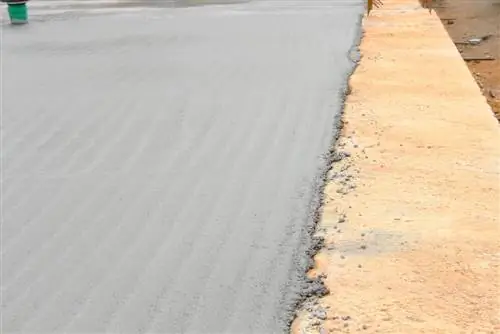
However, the prices can vary greatly. The price for the respective delivery quantity and of course the delivery costs, which can be relatively high for smaller quantities if the concrete has to be delivered by truck, should also be taken into account. This is usually only worthwhile once a certain delivery quantity is reached. However, this type of concrete should only be used for larger areas anyway so that the costs are proportionate to the effort.
The financial outlay that must be taken into account for renting an appropriate vibrating plate is also important. Without this tool, processing and compaction are virtually impossible.
Determination of the required quantity
It is not that easy to determine the actual need for mineral concrete for the area to be processed. In most cases there is no choice but to estimate as accurately as possible. The concrete layer can be calculated by multiplying the length and width of the base layer together and by the desired height. This will give you the volume in cubic meters that needs to be filled. However, there is a problem: the building materials can also be ordered in cubic meters. However, this information always refers to the so-called loose fill, i.e. the quantity that is delivered before the actual compaction. However, the finished mineral concrete bed is at least two or even three times compacted. Accordingly, more material is required.
It's best to ask the dealer
The actual amount can therefore only be roughly estimated, as the actual compression and the associated reduction in total volume cannot possibly be predicted precisely. It depends on the grain size and changes depending on the respective rock mixture. However, you can ask the dealer what volume is estimated to be required for which volume to be achieved. They can usually tell you relatively precisely.

